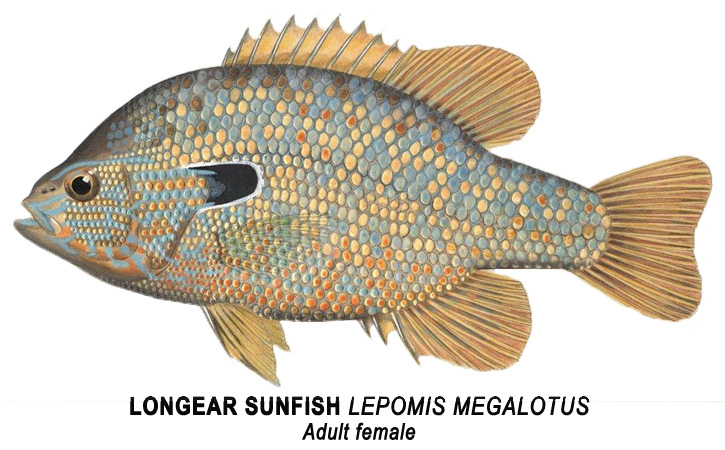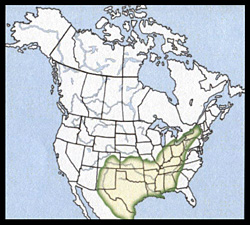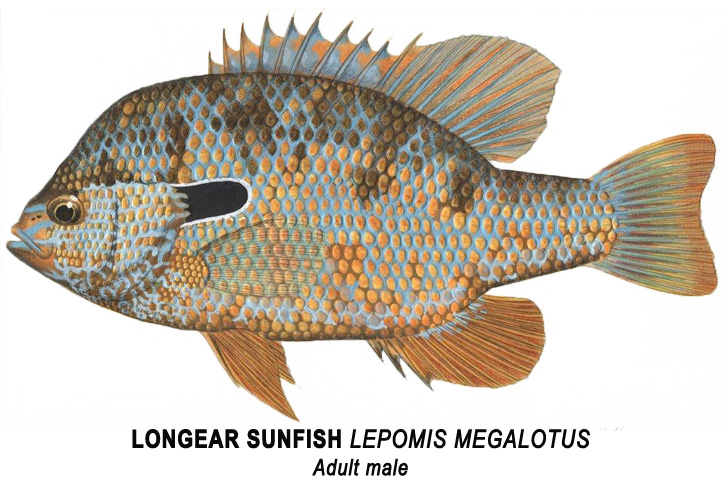Longear Sunfish, September 2014, Fish of the Month!
 Longear Sunfish
Longear Sunfish
Lepomis megalotus
Local Names:
Creek perch, Long-eared bream, Big-eared sunfish, Bloody sunfish, Blackears, Cherry bream
Average Size:
5 to 7 inches
Distinguishing Field Marks:
(See the illustration.)
-
In all adult stages there are blue or aqua markings on the head and body.
-
The very large black ear flap with its narrow white border is a reliable field mark.
-
The pelvic fins are sharply pointed.
North American Range:
Map to the right shows approximate range in North America.
Diet:
Beginning with small zooplankton, the diet later includes aquatic invertebrates, and finally shows a distinct preference for snails, hence the species' common name; Shellcracker.
Biology:
Later than either Bluegills or Pumpkinseeds, Longear sunfish move into their shallow water nesting locations in summer. Nearly identical to Bluegill and Pumpkinseed spawnings, Longear sunfish eggs are released and fertilized in small numbers interspersed with the pair's returning to swimming in circles around the nest. Additional matings with several other individuals will take place to complete the spawning activity. The females are driven from the nests after spawning and the males re-mate and remain at the nest to aerate the eggs and protect the newly hatched young for a few days.
Adult Longear sunfish inhabit the water of clear slow-moving streams, with moderate stands of vegetation, and gravel or sand bottoms. They are occasionally found in warm lakes and reservoirs.
Fly Fishing for Longear Sunfish:
Approach the Longer sunfish as you would our other small sunfish species: 2 to 4 weight outfits to cast small poppers, bugs, and sub-surface flies, such as Wooly Worms and their like. This is another of our small sunfish species that when hooked puts up an excellent battle.
Significance to Humans:
Minimal, as an incidental game fish. Although small, this sunfish makes excellent table fare, and is another sunfish that can be a lovely addition to a home aquarium.
Status:
Maintaining.







